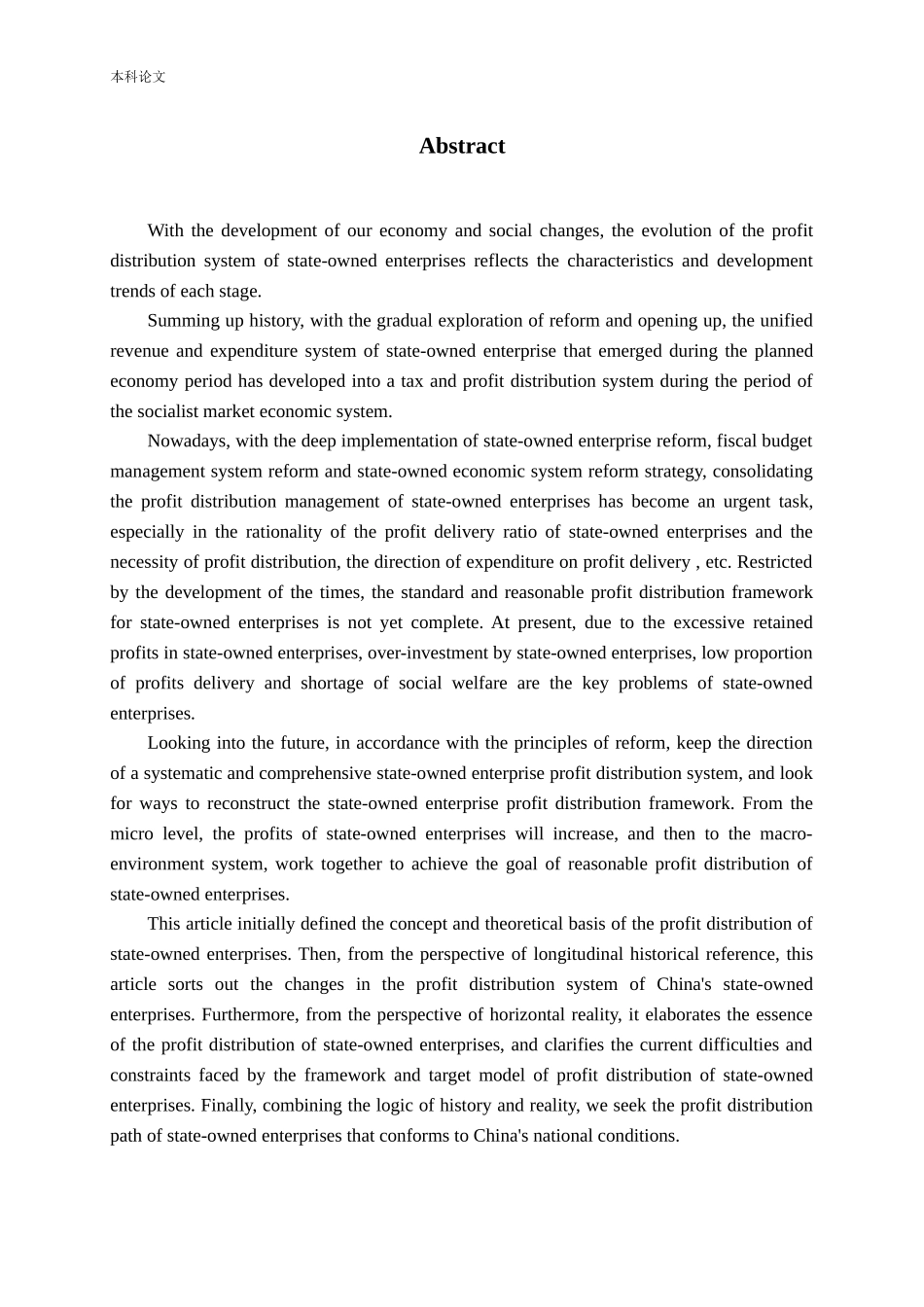本科论文摘 要随着我国的经济发展和社会变革,国企利润分配制度的演变反映出各阶段的特征和发展倾向。总结历史,随着改革开放逐步探索,计划经济时期产生的国企统收统支制度,发展成为社会主义市场经济体制时期的税利分流制。忖量方今,伴随着国企改革、财政预算管理体制改革和国有经济体制改革战略的深入实施,巩固国有企业利润分配管理已成为当务之急,尤其在于国企利润上缴比例的合理性、利润分配的必要性、上缴利润的支出方向等方面。受时代发展的限制,国企标准合理的利润分配形式框架还未完备。目前,由于国企内部留存利润过多致使国企过度投资,利润上缴比例较低,社会福利短缺等方面是国企存在的关健问题。展望未来,依照改革原则,坚定系统而全面的完善国企利润分配制度的方向,寻找国企利润分配框架重新构建的路径选择。自微观层面使国企利润升高,再到宏观环境体系,共同努力实现国企利润合理分配的目标。本文最初对国企利润分配的概念和理论基础进行了界定。而后,本文自纵向历史参考的角度,梳理了我国国企利润分配制度的变迁。继而自横向现实的角度,阐述了国企利润分配的本质,阐明当前国企利润分配的框架和目标模式所面临的困境和制约。最后,结合历史和现实的逻辑,寻求顺应中国国情的国企利润分配路径。关键词:企业利润分配,制度变迁,利润上缴本科论文AbstractWith the development of our economy and social changes, the evolution of the profit distribution system of state-owned enterprises reflects the characteristics and development trends of each stage. Summing up history, with the gradual exploration of reform and opening up, the unified revenue and expenditure system of state-owned enterprise that emerged during the planned economy period has developed into a tax and profit distribution system during the period of the socialist market economic system. Nowadays, with the deep implementation of state-owned enterprise reform, fiscal budget management system reform and state-owned economic system reform strategy, consolidating the profit distribution management of state-owned enterprises has become an urgent task, especially in the r...


